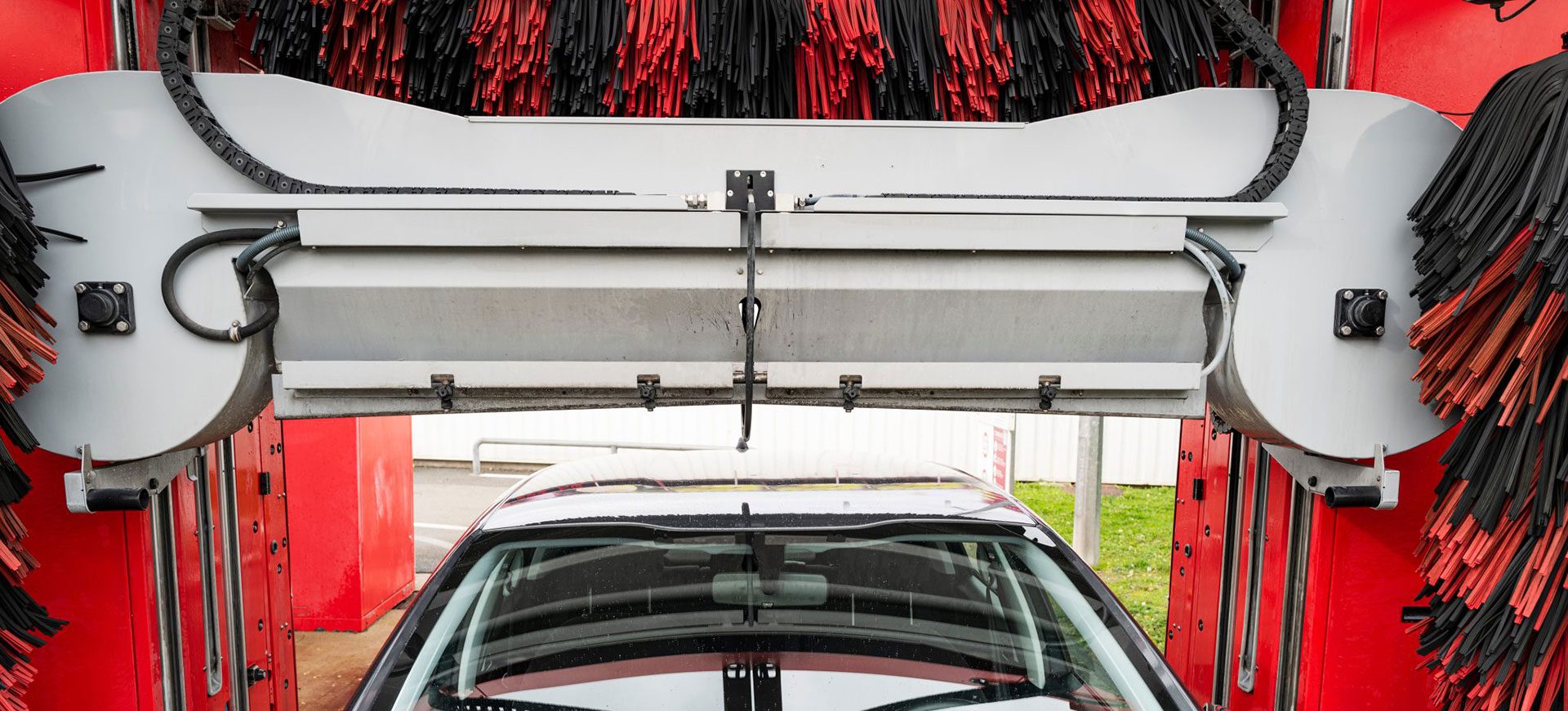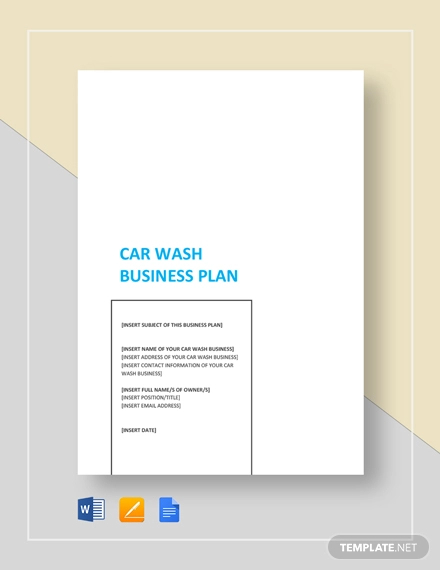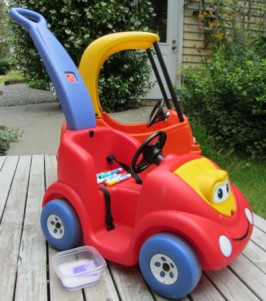
The allure of a freshly washed car is undeniable. Sparkling clean, gleaming under the sun, it’s a feeling that many car owners cherish. But the true mark of a professional car wash lies not just in the wash itself, but in the flawless dry that follows. Achieving that spot-free, water-streak-free finish is the job of the car wash blow dryers, those powerful machines that blast away the remaining water droplets, leaving behind a showroom-ready shine. They are the unsung heroes in the car wash process.
Imagine pulling your car out of the wash bay, only to find it covered in water spots and streaks. The entire experience would be less than ideal. The drying stage is the final impression, and a poor drying performance can ruin the overall customer satisfaction, no matter how meticulously the car was washed. The importance of an efficient drying system can not be overstated; it’s the ultimate touch that separates a good car wash from a great one, turning a simple cleaning into a detail oriented experience.
However, these hard-working machines are often taken for granted, overlooked in the daily hustle and bustle of car wash operations. Yet, like any complex piece of machinery, car wash blow dryers require regular maintenance to ensure optimal performance and longevity. Neglecting this crucial aspect can lead to reduced drying efficiency, increased energy consumption, costly repairs, and even complete system failure. When these dryers are not working at their best the quality and speed of the car wash can suffer which can lead to a decrease in customer satisfaction.
From simple cleaning tasks to more complex inspections and repairs, a proactive approach to dryer maintenance is essential for maximizing the return on your investment and providing your customers with the spotless finish they expect. Understanding the ins and outs of dryer upkeep empowers car wash operators to keep their equipment running smoothly and reliably for years to come. This in turn improves the overall quality and consistency of the car wash service provided which builds customer loyalty and word of mouth marketing.
Therefore, understanding the critical role of these blow dryers is key to ensuring customer satisfaction and long-term operational success. Dive into the essential elements of Maintaining Car Wash Blow Dryers and learn how to keep your drying system performing at its best.
The Foundation: Understanding Your Car Wash Blow Dryers
Identifying Dryer Types
The car wash industry offers a variety of blow dryer systems, each with its own strengths and weaknesses. The most common types include stand-alone dryers, which are individual units positioned along the exit path, and integrated systems, which are incorporated into the car wash tunnel itself. Some car washes may also use hand-held dryers for detail work, especially in areas that are difficult to reach with the main dryers. Understanding the specific type of dryer system installed in your car wash is the first step in developing an effective maintenance plan. Consider the layout of the system and the number of dryers that require regular maintenance.
Different blow dryer designs utilize various technologies, such as centrifugal fans, regenerative blowers, or air knives. Centrifugal fans are known for their high airflow and relatively low pressure, while regenerative blowers offer higher pressure and efficiency. Air knives, on the other hand, deliver a concentrated stream of air for precise drying. Each technology requires different maintenance procedures, so it’s essential to familiarize yourself with the specific characteristics of your equipment.
Beyond the basic technology, variations in motor types, control systems, and nozzle configurations further differentiate dryer models. Factors such as energy efficiency, noise levels, and maintenance requirements also play a role in the selection process. Before any maintenance, consult the manufacturer’s specifications and recommendations to ensure the right procedures are followed. Each system is tailored to provide the best level of quality for the customers.
In short, understanding the variety of blow dryer systems will help to have a more efficient operation. By knowing what the car wash has on hand, the maintenance teams can prepare and be more effective.
Ultimately, matching the appropriate dryer technology to your car wash volume, climate conditions, and desired drying performance is crucial for optimizing efficiency and customer satisfaction. By carefully considering the various options and weighing their respective advantages and disadvantages, you can select a drying system that meets your specific needs and budget.
The Importance of Regular Inspections
Regular inspections are the cornerstone of any effective dryer maintenance program. These inspections should be performed on a scheduled basis, ideally at least once a month, to identify potential problems before they escalate into major repairs. A thorough inspection should include a visual examination of all components, as well as functional tests to assess performance.
Visually inspect the entire dryer system, paying close attention to the housing, nozzles, fans, and motors. Look for signs of damage, such as cracks, dents, or corrosion. Check the condition of the wiring, connectors, and electrical components. Make sure that all safety guards and covers are in place and properly secured. Any signs of wear and tear should be documented and addressed promptly.
Conduct functional tests to assess the dryer’s performance. Measure the airflow and pressure at the nozzles to ensure they meet the manufacturer’s specifications. Listen for unusual noises, such as squealing or grinding, which could indicate bearing problems or other mechanical issues. Monitor the motor’s temperature to ensure it’s operating within the normal range. Any deviations from the expected performance should be investigated further.
During inspections, it’s important to note any changes in performance or operating conditions. Has the drying time increased? Are there more water spots on the cars? Is the dryer louder than usual? These observations can provide valuable clues about potential problems. Document all inspection findings in a logbook or electronic maintenance system to track trends and identify recurring issues.
Ultimately, regular inspections can help you catch problems early, prevent costly repairs, and extend the lifespan of your car wash blow dryers. By incorporating these inspections into your routine maintenance schedule, you can ensure that your drying system is always operating at peak performance, providing your customers with the spotless finish they expect. This simple step can save a lot of money in the long run.
Cleaning and Lubrication: Essential for Smooth Operation
Keeping It Clean: Removing Dirt and Debris
Dirt and debris are the enemies of any mechanical system, and car wash blow dryers are no exception. Over time, dust, dirt, leaves, and other contaminants can accumulate inside the dryer housing, on the fan blades, and around the motor, hindering performance and potentially causing damage. Regular cleaning is essential for maintaining optimal airflow and preventing overheating.
Start by disconnecting the power to the dryer system to ensure your safety. Then, carefully remove the dryer housing and access the internal components. Use a vacuum cleaner with a brush attachment to remove loose dirt and debris from the fan blades, motor housing, and other surfaces. Pay close attention to areas where dirt tends to accumulate, such as around the motor vents and fan bearings.
For stubborn dirt and grime, you can use a mild detergent and a soft cloth to wipe down the surfaces. Be careful not to get any water inside the motor or electrical components. If necessary, use a specialized electrical contact cleaner to remove any dirt or corrosion from the wiring and connectors. Allow the components to dry thoroughly before reassembling the dryer.
In addition to cleaning the internal components, don’t forget to clean the dryer nozzles. Over time, mineral deposits and other contaminants can build up inside the nozzles, restricting airflow and reducing drying efficiency. Use a small brush or a nozzle cleaning tool to remove any blockages. You can also soak the nozzles in a solution of vinegar and water to dissolve mineral deposits.
Regular cleaning not only improves dryer performance but also helps to extend the lifespan of the equipment. By removing dirt and debris, you can prevent overheating, reduce wear and tear, and minimize the risk of breakdowns. Make cleaning a part of your routine maintenance schedule to keep your car wash blow dryers running smoothly and reliably.
The Importance of Proper Lubrication
Proper lubrication is another essential aspect of dryer maintenance. Moving parts, such as fan bearings and motor shafts, require lubrication to reduce friction, prevent wear, and ensure smooth operation. Without adequate lubrication, these components can overheat, seize up, or fail prematurely, leading to costly repairs and downtime.
The type of lubricant required will depend on the specific design of your dryer system. Consult the manufacturer’s specifications to determine the recommended lubricant type and lubrication schedule. In general, most car wash blow dryers use a high-quality grease or oil designed for electric motors and bearings. These lubricants are formulated to withstand high temperatures, resist water washout, and provide long-lasting protection.
Before lubricating any component, clean the area around the lubrication point to remove any dirt or debris. Use a grease gun or oil can to apply the lubricant to the bearing or shaft. Be careful not to over-lubricate, as this can attract dirt and grime. Wipe away any excess lubricant with a clean cloth. Follow the manufacturer’s recommendations for the amount of lubricant to apply.
The frequency of lubrication will depend on the operating conditions and the type of lubricant used. In general, bearings should be lubricated every three to six months, while motor shafts may require lubrication more frequently. Inspect the bearings and shafts regularly for signs of wear or dryness. If you notice any problems, lubricate the component immediately.
By following a proper lubrication schedule, you can significantly extend the lifespan of your car wash blow dryers and prevent costly repairs. Proper lubrication ensures smooth operation, reduces friction, and protects moving parts from wear and tear. Make lubrication a part of your routine maintenance schedule to keep your drying system performing at its best.
Electrical System Care: Ensuring Safe and Efficient Operation
Checking Wiring and Connections
The electrical system is the heart of your car wash blow dryers, providing the power needed to drive the motors and fans. A properly functioning electrical system is essential for safe and efficient operation. Regular inspections of the wiring, connections, and electrical components are crucial for preventing electrical problems and ensuring the reliability of your drying system.
Start by visually inspecting the wiring for signs of damage, such as cracks, fraying, or exposed conductors. Replace any damaged wiring immediately to prevent electrical shock or fire hazards. Check the connections for looseness or corrosion. Tighten any loose connections and clean any corroded terminals with a wire brush or electrical contact cleaner.
Use a multimeter to test the voltage and current at various points in the electrical system. Compare the readings to the manufacturer’s specifications to ensure that the system is operating within the proper range. Look for any voltage drops or current imbalances, which could indicate wiring problems or component failures. Investigate any anomalies further and take corrective action as needed.
Pay close attention to the motor connections, as these are often subject to vibration and stress. Ensure that the connections are tight and secure. Check the motor’s ground wire to ensure that it’s properly connected to a grounding point. A good ground connection is essential for preventing electrical shock and protecting the motor from damage.
Regularly inspect the electrical panels and circuit breakers associated with the dryer system. Look for signs of overheating or damage. Test the circuit breakers to ensure that they are functioning properly. Replace any faulty circuit breakers immediately to prevent electrical overloads and potential fire hazards. By following these steps the life of the electrical systems can be extended.
Monitoring Motor Health
The motor is the workhorse of your car wash blow dryer, responsible for driving the fan and generating the airflow needed to dry the cars. Maintaining the motor in good condition is essential for ensuring the performance and longevity of your drying system. Regular monitoring of the motor’s health can help you identify potential problems early and prevent costly repairs.
Start by listening to the motor while it’s running. Unusual noises, such as squealing, grinding, or humming, could indicate bearing problems, winding faults, or other mechanical issues. Investigate any unusual noises further and take corrective action as needed.
Use a thermometer or infrared temperature gun to monitor the motor’s temperature. Overheating can be a sign of overload, poor ventilation, or winding insulation breakdown. Compare the temperature readings to the manufacturer’s specifications to ensure that the motor is operating within the proper range. If the motor is overheating, investigate the cause and take corrective action, such as improving ventilation or reducing the load on the motor.
Check the motor’s bearings for signs of wear or damage. Listen for grinding or clicking noises, and feel for excessive vibration. If the bearings are worn, replace them promptly to prevent further damage to the motor. Proper lubrication of the bearings is also essential for extending their lifespan.
Regularly inspect the motor’s windings for signs of insulation breakdown. Look for cracks, discoloration, or a burnt smell. If the windings are damaged, the motor may need to be rewound or replaced. By regularly checking in on the motors, there are less chances of costly replacements.
By monitoring the motor’s health on a regular basis, you can identify potential problems early and prevent costly repairs. Listen for unusual noises, monitor the temperature, check the bearings, and inspect the windings. Taking these steps will help you keep your car wash blow dryers running smoothly and reliably for years to come.
Airflow Optimization: Maximizing Drying Efficiency
Nozzle Alignment and Maintenance
The nozzles are responsible for directing the airflow onto the vehicles being dried. Proper nozzle alignment and maintenance are crucial for maximizing drying efficiency and ensuring a consistent, spot-free finish. Misaligned or damaged nozzles can result in uneven drying, increased drying time, and reduced customer satisfaction.
Regularly inspect the nozzles for signs of damage, such as cracks, dents, or corrosion. Replace any damaged nozzles immediately to prevent airflow leaks and ensure proper drying performance. Check the nozzle alignment to ensure that the airflow is directed properly onto the vehicles. Adjust the nozzles as needed to achieve optimal coverage and drying efficiency.
Clean the nozzles regularly to remove any dirt, debris, or mineral deposits that may be restricting airflow. Use a small brush or nozzle cleaning tool to remove any blockages. You can also soak the nozzles in a solution of vinegar and water to dissolve mineral deposits. A simple solution can make for a more efficient nozzle.
Consider the angle of the nozzles. Adjust the angles to best work with the vehicles passing through the tunnel. Each nozzle is different and will work better for certain areas of the car. Consider optimizing this for the best possible clean.
Periodically check the air pressure at the nozzles to ensure that it meets the manufacturer’s specifications. Low air pressure could indicate a problem with the blower system or a leak in the air duct. Investigate any pressure drops and take corrective action as needed. By properly aligning and maintaining the nozzles, you can maximize drying efficiency, reduce drying time, and improve customer satisfaction.
Assessing Ductwork Integrity
The ductwork is responsible for delivering the airflow from the blower system to the nozzles. Leaks, blockages, or other problems in the ductwork can significantly reduce drying efficiency and increase energy consumption. Regular inspections of the ductwork integrity are essential for ensuring optimal airflow and preventing performance issues. Keeping up with the duct work is important, especially with how big and bulky they are.
Visually inspect the ductwork for signs of leaks, cracks, or damage. Pay close attention to the joints and connections, as these are often the most vulnerable points. Seal any leaks with duct tape or sealant. Replace any damaged sections of ductwork to prevent airflow losses. A quick fix can make all the difference.
Check the ductwork for blockages, such as dirt, debris, or nesting materials. Remove any blockages to ensure unrestricted airflow. Clean the ductwork regularly to prevent the buildup of contaminants. If there is a heavy buildup of nesting materials, it may be required to bring in a professional cleaner.
Ensure that the ductwork is properly supported and secured. Loose or sagging ductwork can restrict airflow and cause damage to the system. Tighten any loose supports and add additional supports as needed to prevent sagging.
Monitor the air pressure at various points in the ductwork to identify any pressure drops. Pressure drops could indicate leaks, blockages, or other problems. Investigate any pressure drops further and take corrective action as needed. By maintaining the integrity of the ductwork, you can ensure optimal airflow, maximize drying efficiency, and reduce energy consumption.
Preventative Maintenance Scheduling: Proactive Care for Longevity
Creating a Maintenance Calendar
A well-defined maintenance schedule is crucial for ensuring the long-term reliability and performance of your car wash blow dryers. Preventative maintenance is much more cost-effective than reactive repairs, and it can help you avoid costly downtime. Creating a maintenance calendar is the first step in developing a comprehensive maintenance program.
Start by listing all the maintenance tasks that need to be performed on a regular basis, such as cleaning, lubrication, inspections, and component replacements. Consult the manufacturer’s specifications for recommended maintenance intervals and procedures. Prioritize the tasks based on their importance and potential impact on the system’s performance. There are many great videos on preventative maintenance that will extend the life of machines.
Assign a frequency to each maintenance task. Some tasks, such as daily inspections, may need to be performed more frequently than others, such as annual bearing replacements. Consider the operating conditions and the usage patterns of your car wash when determining the maintenance frequency. Depending on volume, the maintenance schedule will vary.
Schedule the maintenance tasks on a calendar, taking into account the availability of staff and the operating hours of your car wash. Try to schedule the maintenance tasks during off-peak hours to minimize disruption to your business. Be sure to account for weather changes and prepare for extreme weather conditions.
Assign responsibility for each maintenance task to a specific individual or team. This will ensure that the tasks are completed on time and according to the established procedures. Track the completion of the maintenance tasks and document any findings or repairs. By creating a maintenance calendar and sticking to it, you can ensure that your car wash blow dryers are always properly maintained, extending their lifespan and minimizing the risk of breakdowns.
Training Staff on Maintenance Procedures
Even the best maintenance schedule is useless if your staff is not properly trained on the maintenance procedures. Investing in staff training is essential for ensuring that the maintenance tasks are performed correctly and safely. Well-trained staff can identify potential problems early and prevent costly repairs. The more the staff understands, the more they can help ensure a positive outcome.
Provide your staff with comprehensive training on the operation and maintenance of the car wash blow dryers. Cover topics such as dryer types, components, maintenance procedures, safety precautions, and troubleshooting techniques. Use a combination of classroom instruction, hands-on demonstrations, and on-the-job training to deliver the information effectively.
Provide your staff with access to the manufacturer’s manuals and other technical documentation. Encourage them to read the manuals and familiarize themselves with the equipment. Make sure they understand the recommended maintenance intervals and procedures.
Conduct regular refresher training to reinforce the maintenance procedures and address any new issues or changes. Encourage your staff to ask questions and share their experiences. Create a culture of continuous learning and improvement. The more your staff can learn, the more time they can save the company.
By investing in staff training, you can empower your employees to take ownership of the maintenance process and ensure that your car wash blow dryers are always properly maintained. Well-trained staff can perform the maintenance tasks efficiently and safely, identify potential problems early, and prevent costly repairs. This will help you extend the lifespan of your equipment and provide your customers with a reliable and high-quality car wash experience.
Troubleshooting Common Issues: Quick Fixes for Smooth Operation
Addressing Weak Airflow
Weak airflow is a common problem that can plague car wash blow dryers. It can result in longer drying times, spotty finishes, and dissatisfied customers. Troubleshooting weak airflow involves identifying the underlying cause and implementing the appropriate corrective action.
Start by checking the air filters. Dirty or clogged air filters can restrict airflow and reduce the dryer’s performance. Clean or replace the air filters regularly, according to the manufacturer’s recommendations. Check the condition of the filters once a month and see if they need to be replaced.
Inspect the blower motor for signs of damage or wear. Check the motor’s bearings for looseness or noise. Make sure the motor is running at the correct speed. If the motor is faulty, repair or replace it. Ensure that the motor housing is securely and correctly attached.
Check the air ducts for leaks or obstructions. Seal any leaks with duct tape or sealant. Remove any obstructions, such as debris or nesting materials. Replace any damaged sections of ductwork. Make sure that all connections are secure and airtight.
By systematically troubleshooting the potential causes of weak airflow, you can identify the problem and take corrective action. This will help you restore the dryer’s performance and ensure that your customers receive a spot-free finish.
Resolving Excessive Noise
Excessive noise from car wash blow dryers can be annoying to customers and employees, and it can also be a sign of underlying problems. Troubleshooting excessive noise involves identifying the source of the noise and implementing the appropriate corrective action.
Start by listening to the dryer while it’s running. Try to pinpoint the source of the noise. Is it coming from the motor, the fan, or the ductwork? Once you’ve identified the source, you can focus your troubleshooting efforts on that area.
If the noise is coming from the motor, check the bearings for wear or damage. Replace the bearings if necessary. Lubricate the motor’s moving parts. Check the motor mounts for looseness or vibration. Tighten or replace the motor mounts if necessary.
If the noise is coming from the fan, check the fan blades for damage or imbalance. Replace any damaged fan blades. Clean the fan blades to remove any dirt or debris. Check the fan housing for looseness or vibration. Tighten or replace the fan housing if necessary.
By systematically troubleshooting the potential sources of excessive noise, you can identify the problem and take corrective action. This will help you create a more pleasant environment for your customers and employees, and it can also prevent further damage to the dryer.
Maintaining Car Wash Blow Dryers is not just about fixing problems as they arise. It’s about creating a proactive maintenance plan that ensures optimal performance, minimizes downtime, and extends the lifespan of your equipment. By understanding the different types of dryer systems, performing regular inspections, cleaning and lubricating components, caring for the electrical system, optimizing airflow, scheduling preventative maintenance, and training your staff, you can keep your car wash blow dryers running smoothly and reliably for years to come. This commitment to maintenance will not only improve the quality of your car wash service but also enhance customer satisfaction and boost your bottom line.
Interested in learning more ways to optimize your car wash operations? Check out our other articles on topics such as water conservation, chemical management, and customer service strategies.


